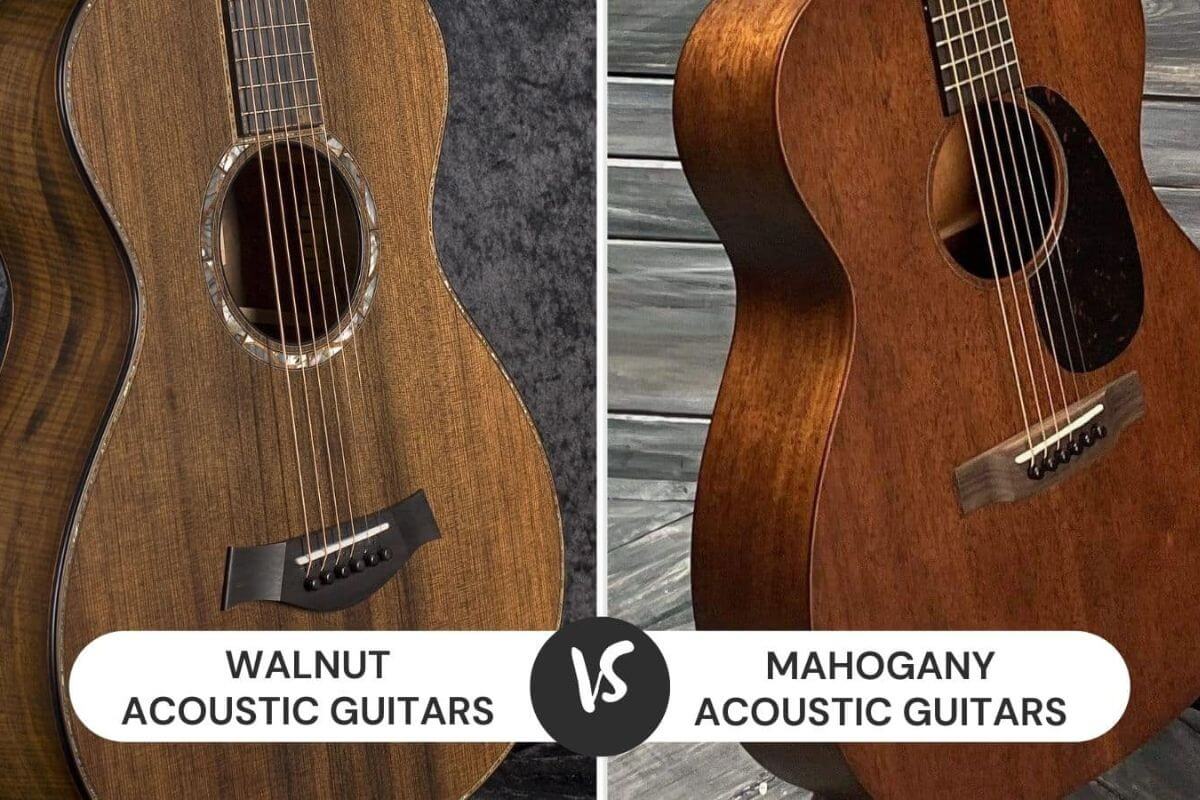When it comes to woodworking, the choice of wood species can significantly impact the final result of your project. Mahogany and walnut are two popular wood choices known for their beauty, durability, and versatility. In this article, we’ll compare mahogany and walnut to help you make an informed decision for your woodworking project.
Mahogany
Appearance
Mahogany is revered for its rich, reddish-brown hue and a fine, straight grain pattern. It has a warm and inviting appearance that can add elegance and sophistication to furniture, cabinets, and interior trim.

Durability
Mahogany is a highly durable wood with natural resistance to decay and pests. It’s well-suited for projects that require longevity, making it a favorite for fine furniture and boat building.
Workability
Mahogany is easy to work with, thanks to its excellent machining properties. It cuts, sands, and finishes well, making it a favorite choice for both hand and machine woodworking.
Walnut
Appearance
Walnut is known for its rich, dark brown to purplish-black color with a striking, wavy grain pattern. It has a unique combination of deep color and intricate grain, giving it a luxurious and upscale appearance.
Durability
While not as naturally durable as mahogany, walnut still offers good resistance to decay and pests. It’s a strong wood that can withstand daily use, making it suitable for furniture, cabinets, and fine woodworking.
Workability
Walnut is a pleasure to work with due to its moderate density and workability. It machines, carves, and finishes well, making it a favorite among woodworkers for crafting intricate details.
Factors to Consider
Aesthetic Preferences
Consider your aesthetic preferences and the color scheme of your project. Mahogany’s warm, reddish-brown tones may be preferable for traditional and classic designs, while walnut’s dark, luxurious appearance can complement both traditional and modern aesthetics.
Project Type
The type of project you’re undertaking should influence your choice. Mahogany is often chosen for outdoor projects, fine furniture, and boat building, while walnut is favored for indoor furniture, cabinets, and decorative items.
Durability Requirements
Evaluate the durability requirements of your project. Mahogany is an excellent choice for projects that need to withstand outdoor exposure and harsh conditions. Walnut, while still durable, is typically chosen for indoor applications.
Budget
Consider your budget. Mahogany is often more affordable than walnut, so if cost is a significant factor, mahogany may be the more practical choice.
Conclusion
The choice between mahogany and walnut ultimately depends on your project’s requirements, design preferences, and budget. Both woods offer exceptional beauty and workability, but they are best suited for different types of projects. Whether you opt for the warm, inviting charm of mahogany or the deep, luxurious tones of walnut, your choice of wood will undoubtedly contribute to a stunning and enduring finished piece.
FAQs
1. What are the key differences between mahogany and walnut wood?
- The key differences include their appearance, durability, and workability. Mahogany has a reddish-brown hue and is highly durable, while walnut is known for its dark, luxurious color and moderate durability.
2. Which wood is better suited for traditional or classic designs, mahogany or walnut?
- Mahogany’s warm, reddish-brown tones make it a popular choice for traditional and classic designs. However, walnut’s rich, dark appearance can also complement these styles.
3. Are both mahogany and walnut suitable for indoor furniture and cabinets?
- Yes, both mahogany and walnut are excellent choices for indoor furniture and cabinets. They offer durability and aesthetics that make them popular for these applications.
4. Can mahogany be used for outdoor projects?
- Yes, mahogany is a suitable wood for outdoor projects due to its natural resistance to decay and pests. It’s often used for outdoor furniture and boat building.
5. Which wood is more affordable, mahogany or walnut?
- Generally, mahogany is more affordable than walnut. If you have budget constraints, mahogany may be the more practical choice.
6. Is walnut suitable for modern or contemporary designs?
- Yes, walnut’s dark and luxurious appearance can complement both traditional and modern aesthetics. It’s a versatile wood choice for various design styles.
7. Are there specific projects for which one wood is better than the other?
- Mahogany is often chosen for outdoor projects, fine furniture, and boat building due to its durability. Walnut is favored for indoor furniture, cabinets, and decorative items.
8. Can I mix mahogany and walnut wood in the same project for a contrasting look?
- Yes, mixing mahogany and walnut wood can create a striking contrast in your woodworking project. This can add visual interest and uniqueness to your piece.
9. Do both mahogany and walnut wood require special care or finishes?
- Both woods benefit from proper finishes and care to enhance their appearance and durability. Choosing the right finish for your project and maintaining it can help preserve the wood’s beauty.
10. Are there any specific woodworking techniques or tools that work better with mahogany or walnut?
- Both mahogany and walnut are generally easy to work with. They can be cut, shaped, and finished with standard woodworking tools and techniques. The choice may come down to personal preference and the specific requirements of your project.
Ultimately, your choice between mahogany and walnut wood should align with your project’s needs, design preferences, and budget. Both woods offer unique beauty and characteristics that can contribute to a stunning and enduring finished piece of woodworking.



